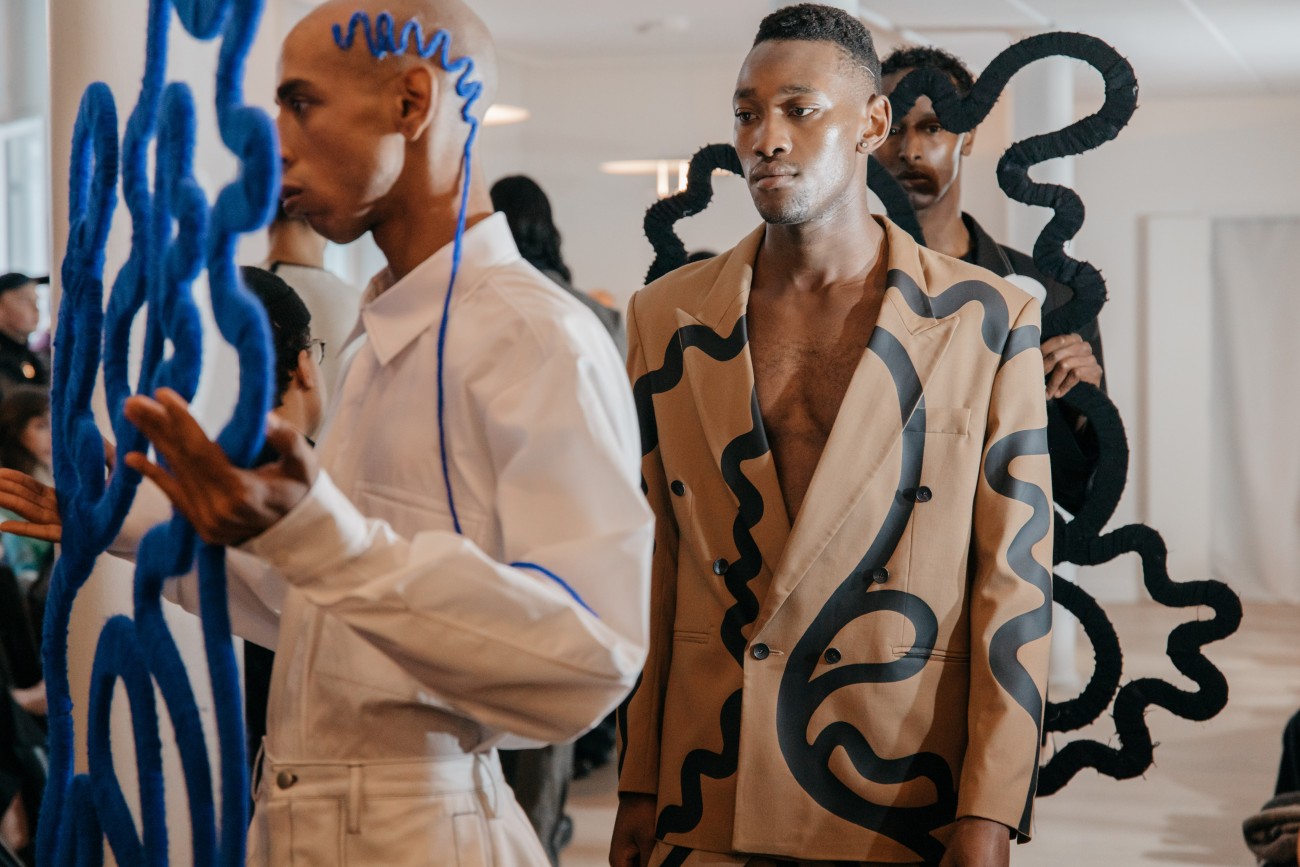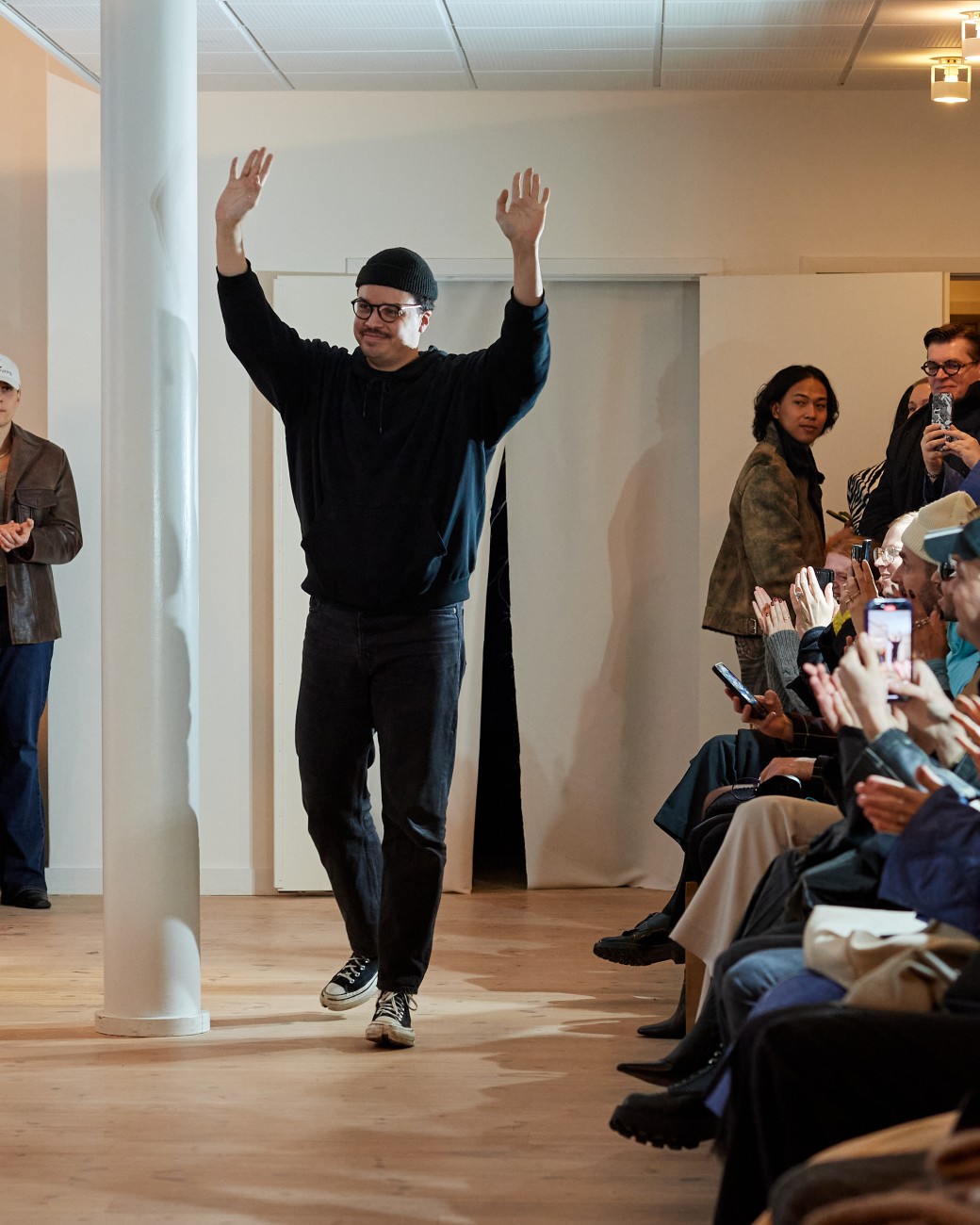A new menswear label has been making waves in Scandinavia lately. On only its second runway outing, the Finnish brand Latimmier opened Copenhagen Fashion Week this spring with a hotly anticipated AW23 collection full of playful juxtaposition, genre-dodging cuts and cool-headed craftmanship.
The name behind the brand is rising Finnish-American talent Ervin Latimer. A graduate of the prestigious Aalto University in Helsinki, he cut his teeth at the Milan-based cult luxury label ALYX and the Danish high-end label Heliot Emil, before the lauded debut of Latimmier at Pitti Uomo in January 2022.
Subverting the leitmotifs of masculinity and interplaying glamour, power and desire, Latimmier’s ballroom and drag-inspired AW22 collection set the stage for an AW23 offering that is more nuanced in its sensuality – but still spiked with kink. Throughout, menswear tropes like cuffs, lapels and pockets are applied to exaggeratedly boxy or flowy silhouettes. The collection gestures to uniform, to notions of ‘on’ and ‘off duty’, and to a more interpretive sartorial realm via crocheted string vests, garments that could be shirts, suits or dresses – or all at once, and large abstract frames that recall the lip of an Alvar Aalto vase, carried as accessories. Latimmier brings tropes of male dressing into this abstract space, and in doing so asks “who is allowed to perform masculinity and how?”
But despite this talk of performing masculinity, the label actively opposes surface-level inclusivity. POC and queer culture is the bedrock of the brand, and Latimer works to carve space in the Nordic fashion scene for POC and queer creatives, on and off the runway. “Fashion needs a deeper purpose that justifies its existence,” he says.
On that note, and fresh from the launch of his AW23 ready-to-wear collection, we caught up with Ervin Latimer to hear his take on the label’s evolution so far, and what’s next for the young designer.
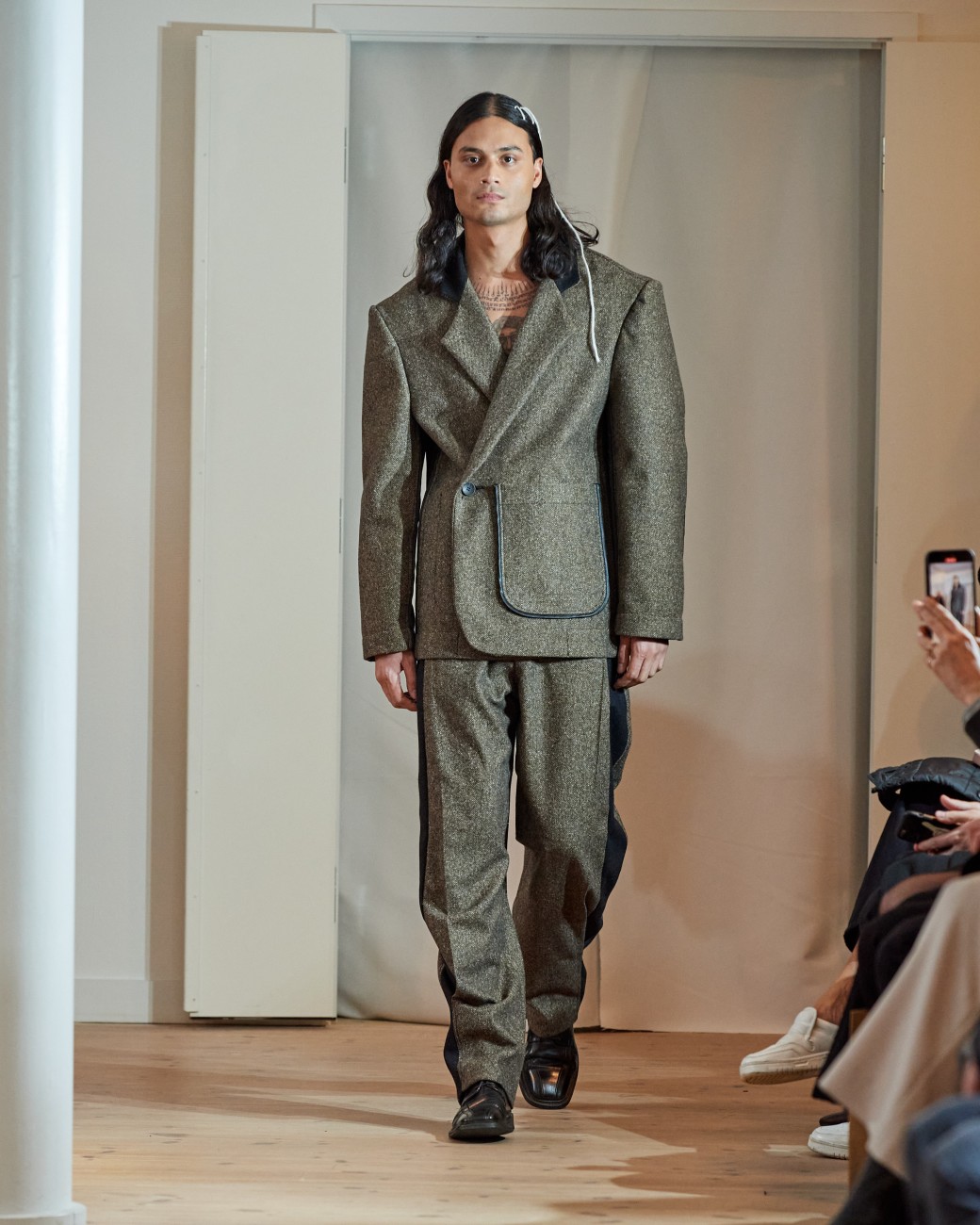 |
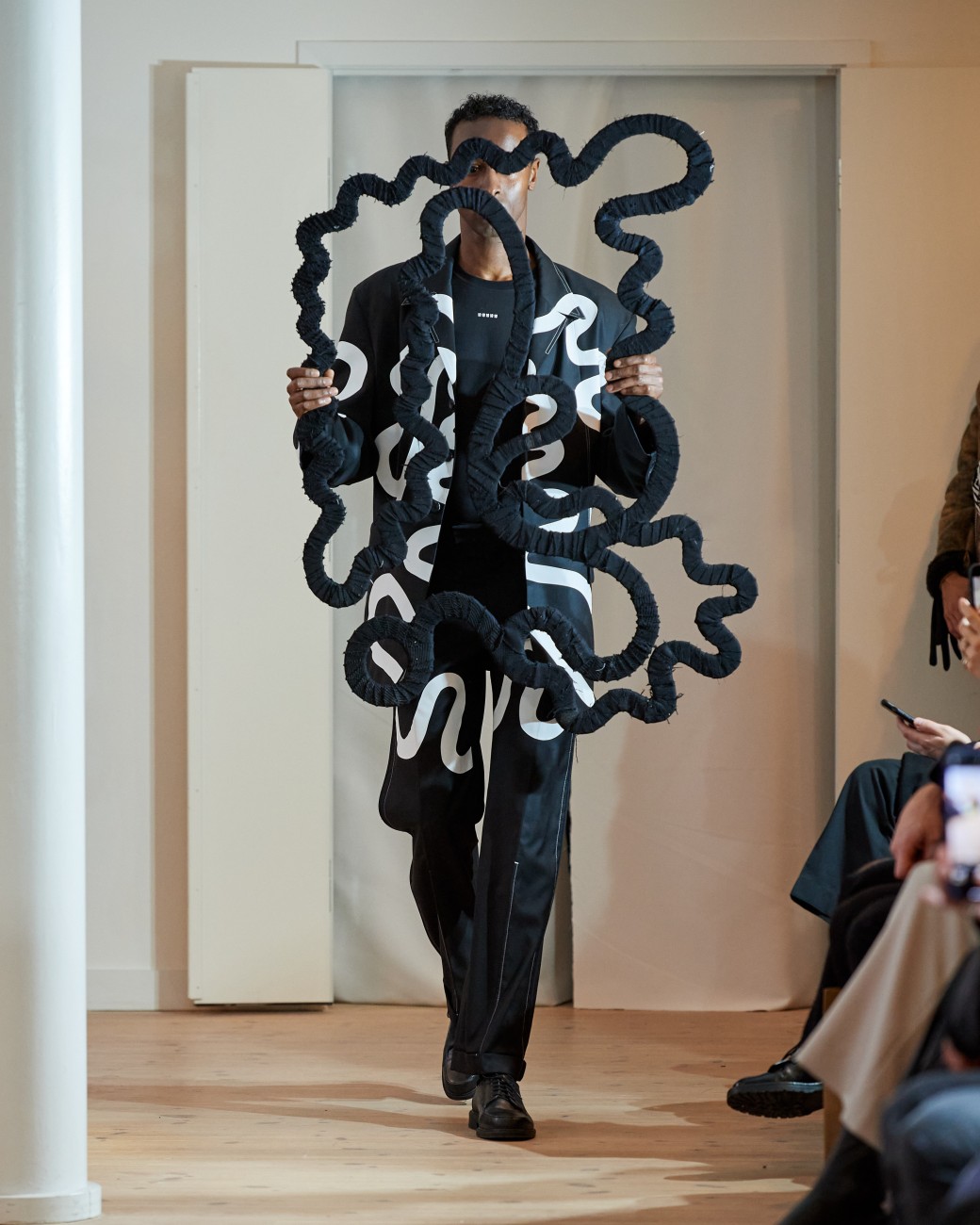 |
Œ: How did Latimmier come about, and what is at its core?
Ervin: Latimmier exists for the performance of masculinities through fashion and clothing. The brand is a natural continuation of themes that have always been interesting to me: value-based design, clothing’s role as building blocks of identity, and questions of social sustainability and inclusivity within a capitalist industry.
Œ: Which experiences or people have been most influential in shaping your creative DNA?
Ervin: I’ve always been more interested in what clothes are about than simply what they look like. That’s at the core of my creativity and, since it’s always been there, I guess it’s more reflective of what I’m like as a person. I always liked to ask ‘why’ rather than ‘what’. More recently, it’s been my involvement in the local ballroom scene and how ballroom utilizes clothes to create story and identity.
 |
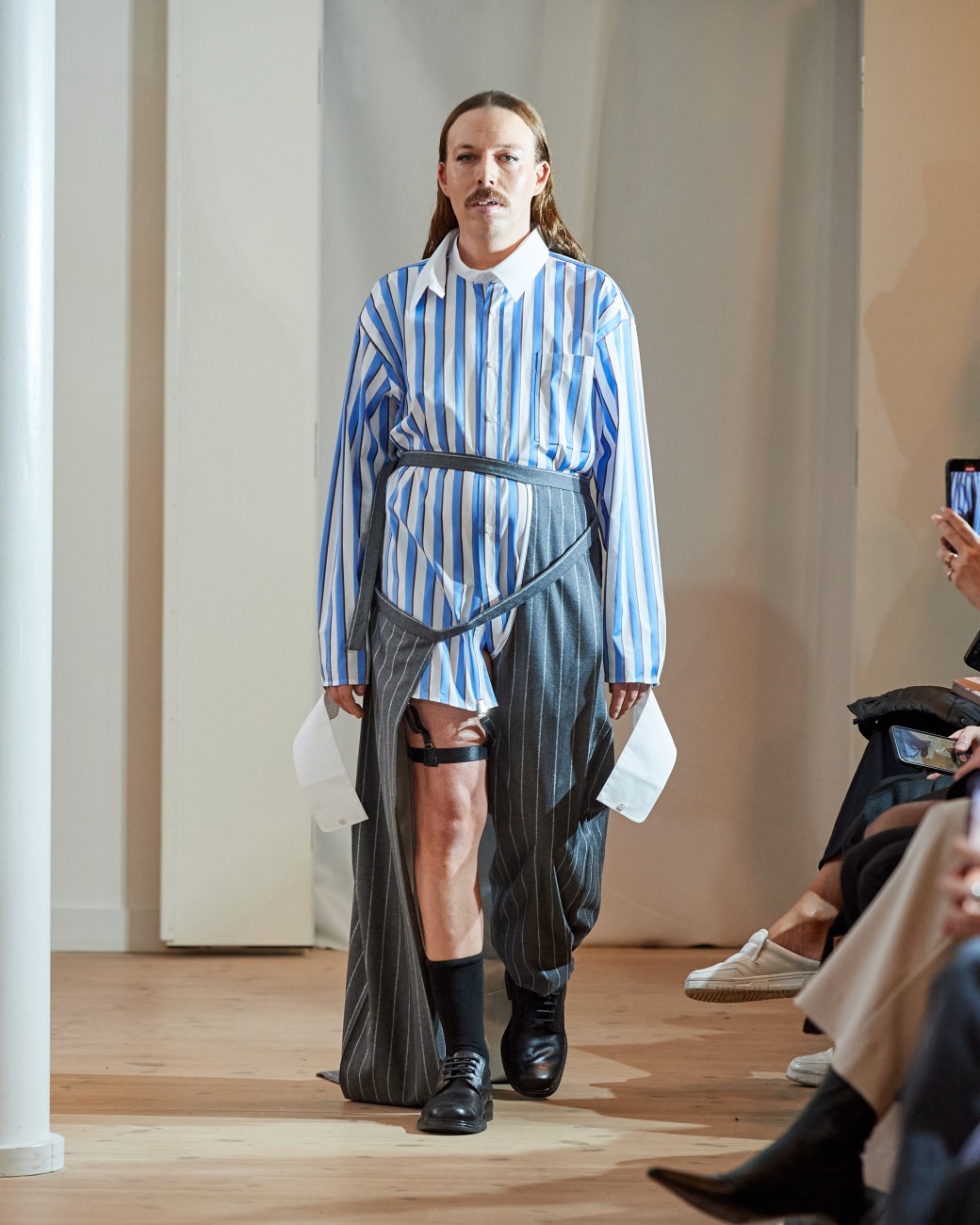 |
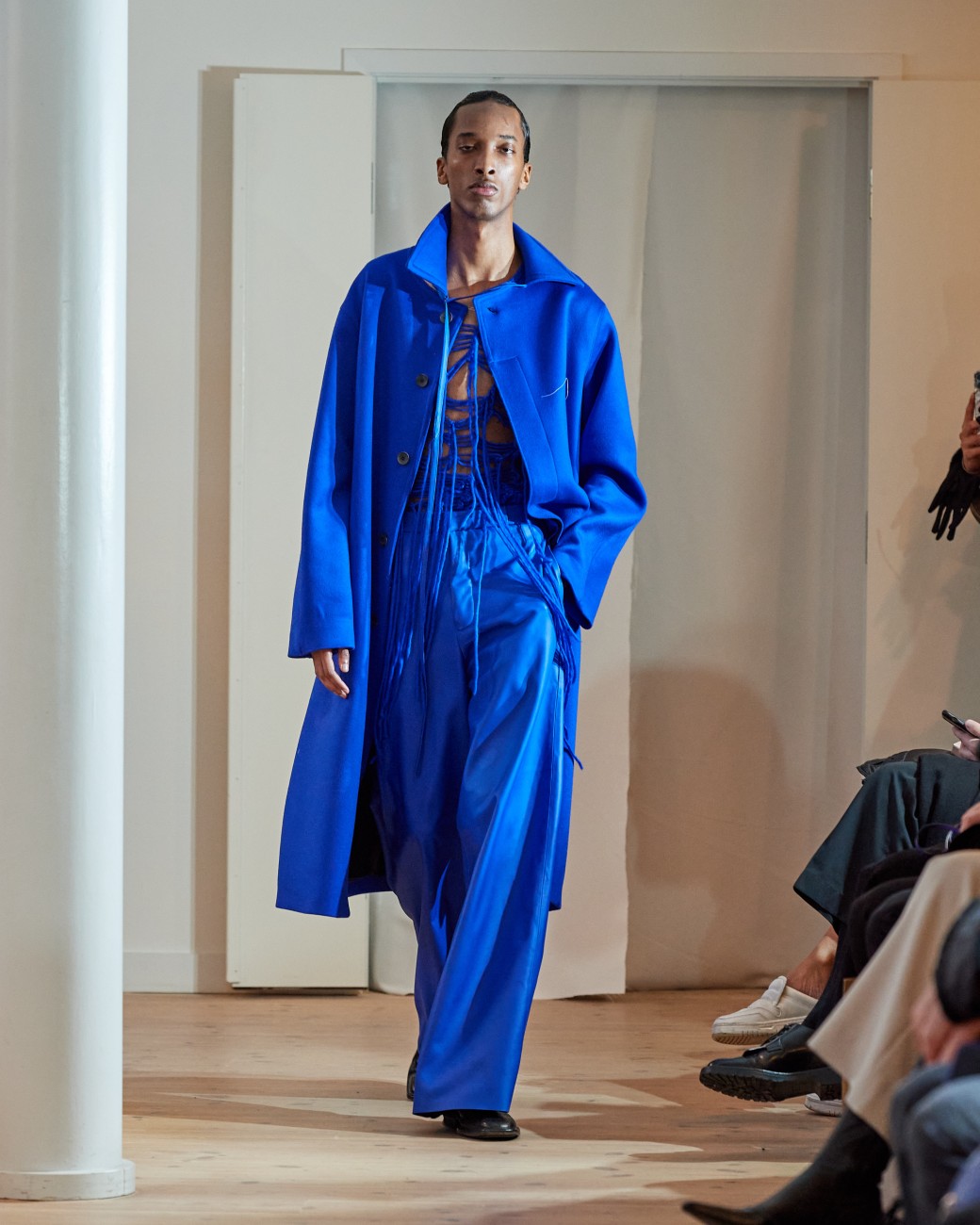 |
 |
Œ: How does the Latimmier AW23 collection evolve or break away from your previous work?
Ervin: Our third collection was all about slowing down and focusing on process and techniques as a small brand with limited resources. We focused much more on handmade and hand-finished techniques and designs that we can make in-house to order to be more sustainable, but also cost efficient. The collection was extremely tightly edited but it ended up being a really potent distillation of our DNA both visually and thematically.
Œ: You say that “the brand aims to expand the notion of masculinity by challenging who can perform masculinity and what kind of clothing can be used to do that.” Can you say more about this idea of performing masculinity? What does an expanded notion of masculinity look like to you?
Ervin: We don’t design men’s or women’s clothes, but rather focus on performing masculinity, a process that ultimately any product directly aimed for men usually does. It’s just our way of saying that we design garments that are based on the history of western menswear. However, we don’t see men or any gender as a target audience. Anyone can express their masculine side and we want our clothes to be a tool for that. Notably, there are many types of masculinities and we try to challenge – often by subverting stereotypes – the norms attached to them. As an example, we’re not trying to communicate something as simple as “men can wear skirts”, but rather that anyone can wear this silhouette that we in the western world refer to as a skirt and that should be a part of the norm of masculinity as well.
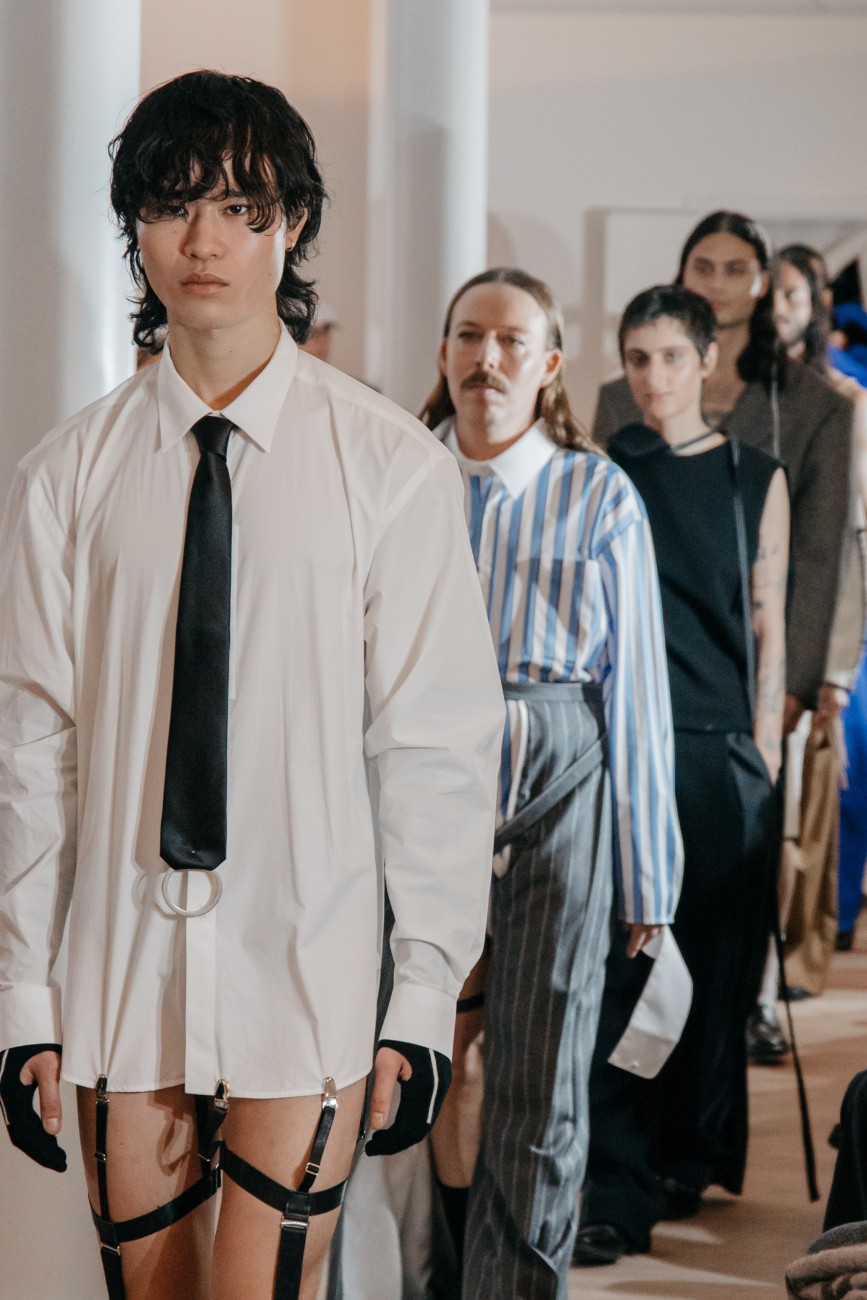 |
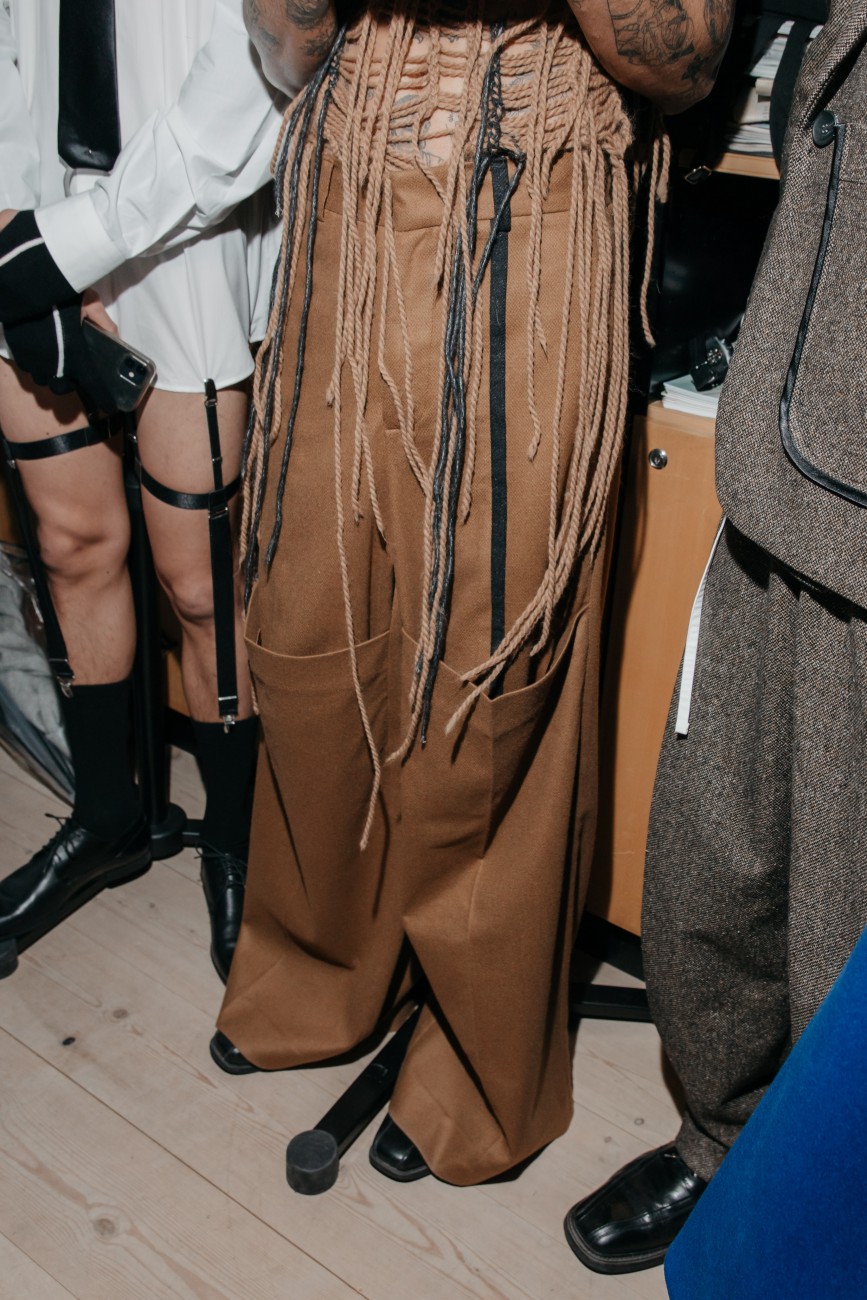 |
Œ: What shapes, materials or dress codes are you interested in deconstructing?
Ervin: Anything that stems from the history of western menswear, particularly men’s tailoring. The more conservative and normative, the better.
Œ: What unexpected sources of inspiration do you feel drawn to right now?
Ervin: At the moment, I’m drawing a lot of inspiration from film characters that I really dislike: characters like Jordan Belfort from The Wolf of Wall Street or Tommy DeVito from Goodfellas. And to be clear, these aren’t necessarily movies or performances that are bad; quite the contrary, they present the types of masculinity that I find repulsively toxic and thus extremely inspiring for my work.
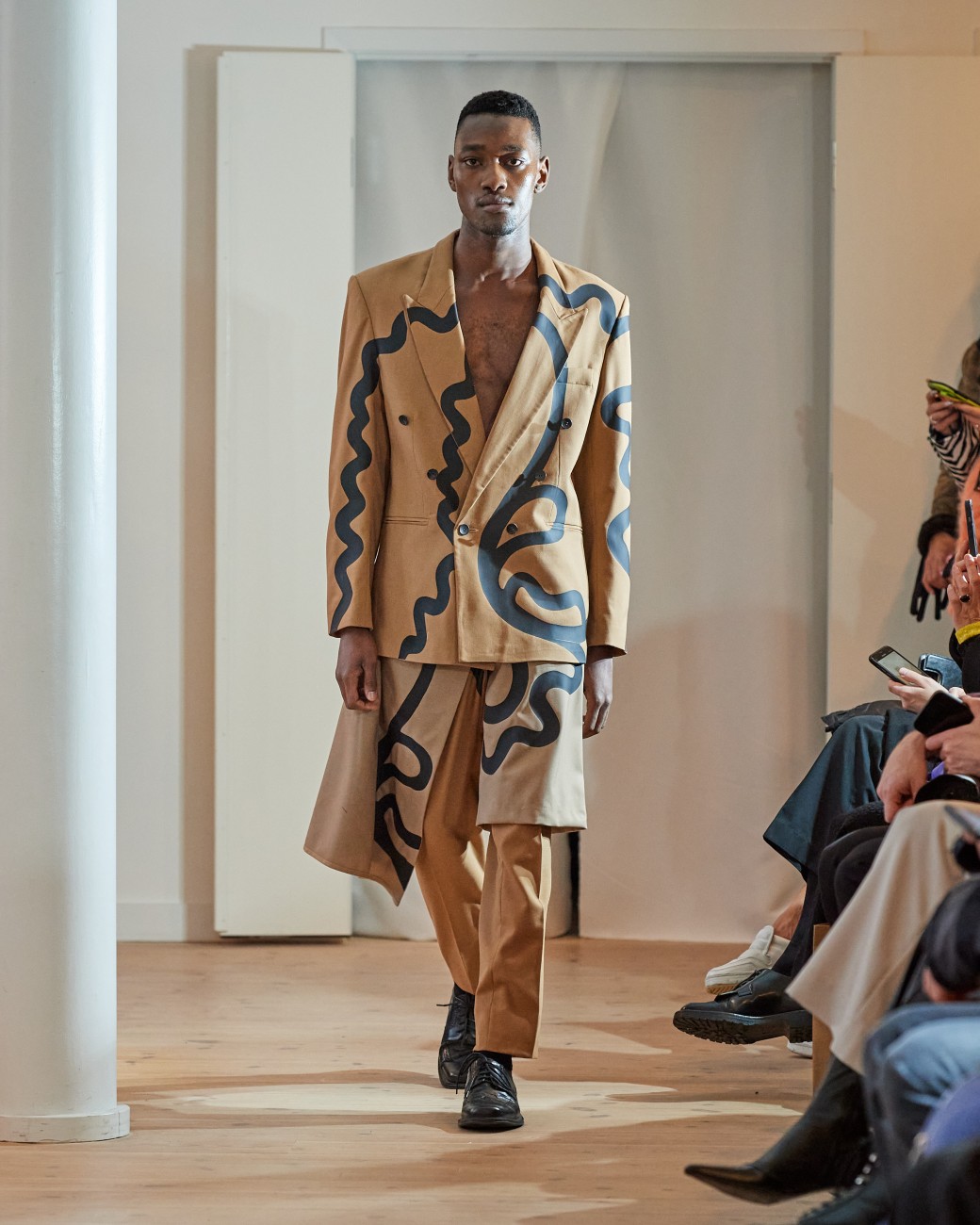 |
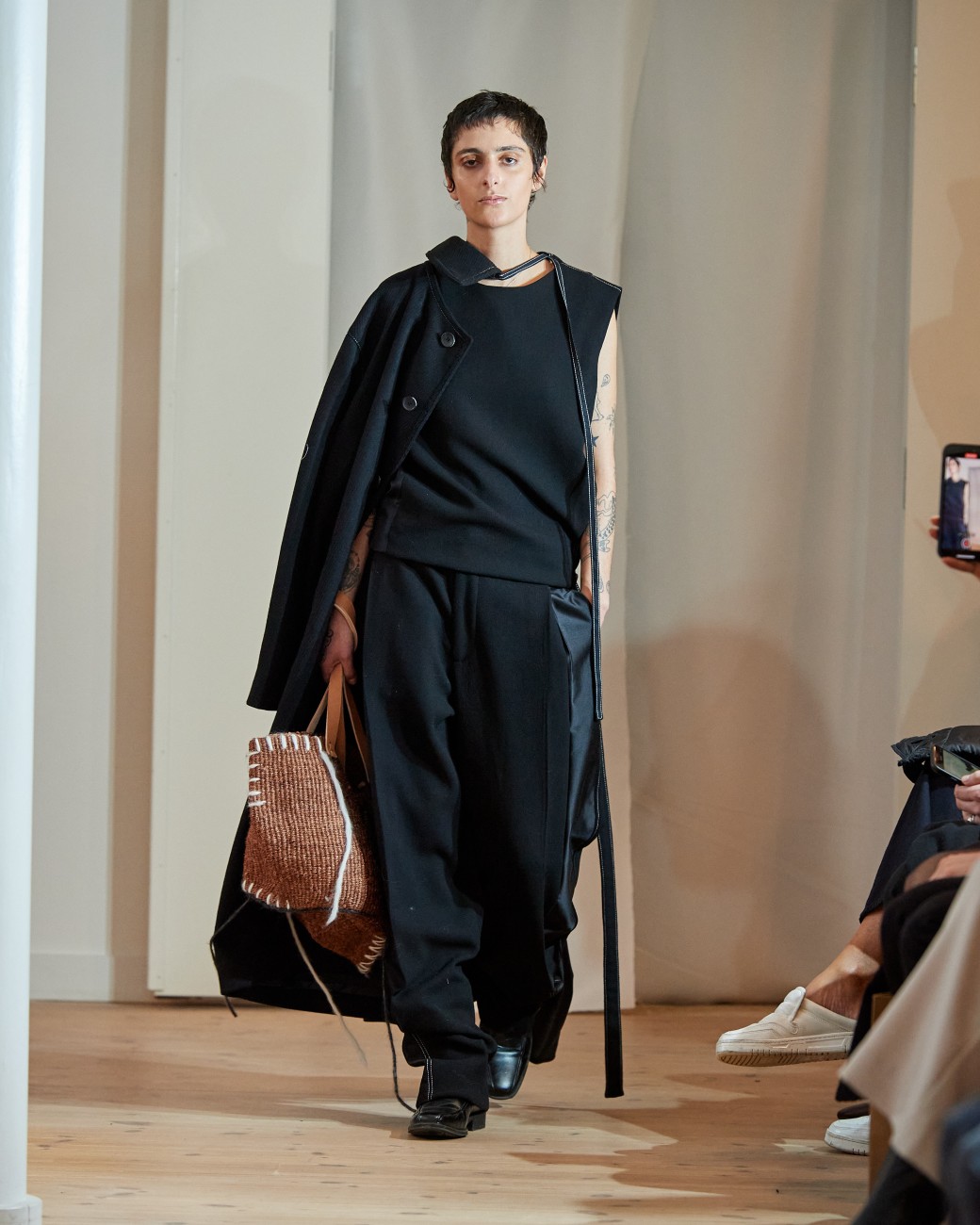 |
Œ: What’s one aspect of your personality, and of your creative approach that you think have got you where you are today?
Ervin: I’m extremely determined. I set clear goals for myself and work very hard to achieve those goals. I think I also possess a healthy amount of competitive attitude that sometimes helps me push the extra mile. Most importantly, however, I think I’m also emphatic and kind. Even though I’ve gotten far with my determination, I’d like to think it’s my kindness that has set me apart and ultimately has allowed me to get where I am now.
Œ: What’s next for you as an artist, and for Latimmier as a label?
Ervin: As an artist I’m not sure, I’m open to new things and I’m constantly working in new projects. So, I guess, continued curiosity. Next for Latimmier is setting bigger tent poles to have a proper business. We have a clear vision and approach to fashion, but we really aim to be a viable and profitable business as well. So even though it’s not that sexy and artistic an answer, it’s definitely the next big focus.
Interview – Lena Hunter
Runway photos – James Cochrane
Backstage photos – Tonya Matyu
